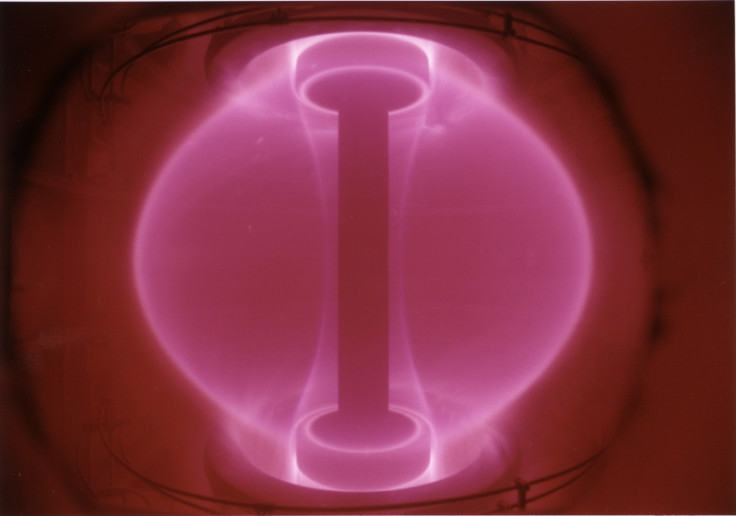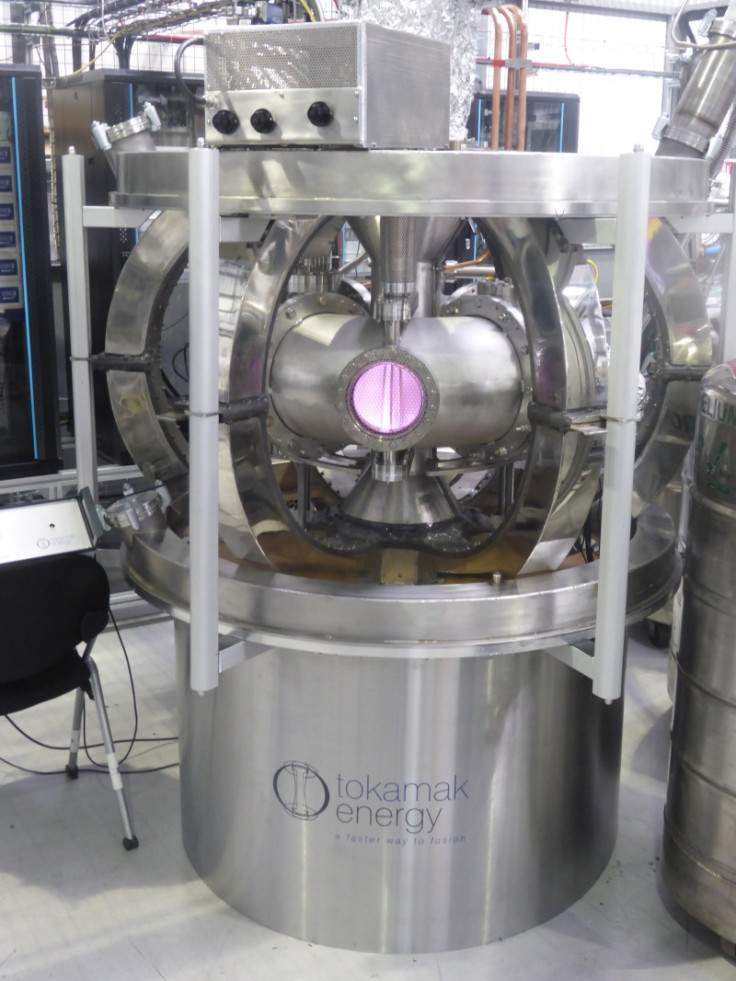How do you create energy from magnets and plasma hotter than the centre of the Sun?
Tokamak Energy says fusion energy could be powering UK homes in just 15 years.
Nuclear fusion is often touted as the Holy Grail of sustainable energy. It works in the same way as the Sun and stars produce energy, meaning it could potentially provide a cheap and near-limitless source of power. However, while the scientific understanding of harnessing this potential source of power has long been known, the technology to action it has lagged behind.
Fusion energy involves nuclear reactions where lighter elements join together to create heavier ones. The energy produced in the reaction is the source of energy, but for the reaction to take place you need extremely hot temperatures – hotter than the centre of the sun. This means scientists must create a fusion reactor that can create and confine the plasma (state of matter) produced.
Research institutes across the globe are currently working to develop these devices that can create and confine extremely hot plasma – hotter than the centre of the sun. Currently two types of device are being tested – the Stellarator and the tokamak – that latter of which is currently seen as the more promising method of creating fusion energy.
In the UK, Tokamak Energy is edging closer to creating a fusion reactor that they believe could be supplying electricity to the grid in just 15 years. CEO David Kingham told IBTimes UK: "Nuclear fusion is the process that powers the sun and the stars. It's the process of fusion of small ions to produce larger ions. It destroys mass in the process and creates energy.
"So on the Sun you've got hydrogen ions joining together to make helium and that produces huge amounts of energy. The reaction is quite slow so the sun doesn't burn out quickly - it will last for billions of years. What we try to do on Earth is fuse together two heavy isotopes of hydrogen, deuterium and tritium.

"There are various suggested ways of doing this fusion in a controlled manner on Earth and the best proven technique is to use magnets to hold the very hot plasma at high pressure and high temperature for a long time. And the best type of device for doing that is a so called tokamak which is a particular form of magnetic bottle that has been proven to get very close to fusion conditions – to get very close to conditions necessary to produce more energy out than you put in."
At present, the best results for nuclear fusion in the UK have seen 16MW produced. However, the team had to put in 24MW of power to heat the plasma. "The science of these devices is now pretty well understood and it's now becoming an engineering challenge. And that's what we're working on," he said.
Instead of trying to build one massive fusion reactor, Tokamak Energy is looking to create smaller machines. "The key technologies we're working on, one is the spherical tokomak which is a sort of squashed up compact version ... If we can squash things down like that we can make more efficient use of the magnetic field, so it helps to stabiles the plasma and to get high temps and pressure in plasma," Kingham explained.

"The goal at the end of the day is producing electricity in we would be aiming for 100MW scale power plants so you might need 10 of them on one site for a large scale fixed grid power planet, or you might use them as distributed power in 100MW units for a town."
At present, scientists at the company are looking to use high temperature superconducting magnets. While this technology has been known about for the last 30 years, it is only in recent years people have been able to manufacture them. The next step will be to work out how to put these superconductors into magnets capable of generating extremely high magnetic fields.
The team has built two devices so far. The first was to demonstrate it could be built: "It didn't produce any energy but we didn't put any fuel in it," Kingham said. The second devices saw them sustain plasma for 24 hours. With the next devices they hope to get the plasma to reach 100 million degrees – "the sort of temperatures you need for controlled fusion on Earth".
This is not the only step, however: "If you can perfect that, then other challenges start to emerge, like techniques for breeding the fuel necessary to sustain these reactors. There's two components to fuel, one is deuterium which is plentiful in seawater. The other is tritium which is an even heavier isotope of hydrogen and that needs to be bred in the fusion reactor from lithium. Lithium isn't a problem but proving that the breeding reaction can work efficiently will be challenging."

Kingham said that while these issues remain, he believes fusion energy is the way forward. It carries fewer risks than nuclear fission – there is no risk of meltdown, you cannot steal the fuel to make a bomb and although there is some production of short lived radioactive isotopes, there are no long-lived ones.
"I think it's always promised to be an exciting way of producing electricity for the future," he said. There was great progress made particularly in 90s ... but since then progress has been pretty slow. Progress has not been as good as people had hoped and because of that slow progress, private sector initiatives have sprung up with all sorts of interesting approaches to fusion.
Ultimately, Tokamak Energy has plans to build five reactors, with the final one producing usable energy. "It could still be 15 years before we can put energy into the grid. We're aiming to demonstrate energy gain in one of our devices by 2020. Then it'll take maybe five years to demonstrate electricity for the first time then another five years to put it into the grid at usable quantities."
© Copyright IBTimes 2024. All rights reserved.






